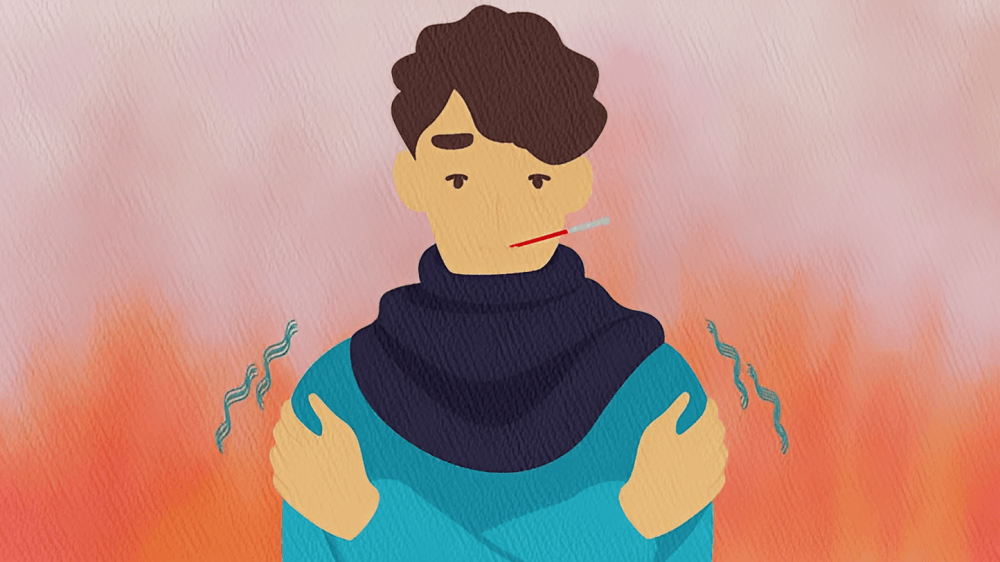
“
Recognizing early symptoms of COVID-19 is crucial for timely intervention and preventing the spread of the virus. Early detection can lead to better outcomes and reduce transmission. This article provides insights into the initial signs to watch for, helping you stay vigilant and informed.1
1
”
Doctors worldwide have stressed that recognizing symptoms early can save lives, reduce hospitalizations, and help isolate infected individuals to prevent exposure, especially during variant surges. 1
One of the earliest and most consistent signs is a sudden high fever, usually above 38°C, indicating your immune system is actively fighting off the invading coronavirus inside the body. 2
A dry, persistent cough often begins early and worsens over time, caused by the virus irritating and inflaming tissues in the lower respiratory tract, even in otherwise healthy individuals. 3

Early fatigue that feels deeper than usual tiredness is commonly reported. It signals the immune system is actively releasing cytokines to control the infection, leaving the person feeling unusually drained.
An unexpected and sudden loss of smell or taste — even without a stuffy nose — is a striking early symptom unique to COVID-19 and can be an early warning even before fever appears. 4
A scratchy or sore throat may occur as the virus enters through the mouth or nasal passages, sometimes being the only symptom during the initial days of infection, especially in mild cases. 5
Headaches, often dull and persistent, are another early symptom. These can result from viral inflammation or fever and might last several days before other respiratory symptoms develop fully. 6
Nausea, vomiting, and mild abdominal discomfort can appear before any coughing or fever. These signs indicate the virus might be affecting the gastrointestinal tract in some early-stage patients. 7
Some people develop conjunctivitis, or red, itchy eyes, as an early symptom. This could be due to viral particles reaching the eyes through droplets or from touching the face after exposure. 8
Skin rashes, especially on the toes or fingers — sometimes called “COVID toes”—are seen early in some cases, showing how the virus can affect small blood vessels and skin tissues. 9

Shivering or body chills, often accompanied by a spike in body temperature, are part of the body’s fever response as it attempts to create an environment hostile to viral replication.
Chest discomfort or pressure might occur early and should never be ignored, especially if it worsens during deep breathing, as it may signal the virus beginning to affect lung function. 10
A runny nose or nasal congestion is often mistaken for allergies or a regular cold, but if it appears suddenly along with other symptoms, it could indicate the start of COVID-19. 11
Some infected individuals experience night sweats early, soaking their clothes or bed linen. This intense sweating is often the body’s way of regulating temperature while it battles the virus. 12
“Brain fog,” which includes poor memory and trouble focusing, can occur early in infection. This cognitive cloudiness is due to inflammation and possibly reduced oxygen delivery to the brain. 13
Mild ear discomfort or a sense of fullness in the ears may appear early due to inflammation in the upper respiratory system or sinus pressure changes caused by the viral infection. 14

A racing heartbeat or heart palpitations can be an early response to systemic inflammation or anxiety triggered by infection. It sometimes comes before respiratory symptoms.
Changes in mental state — such as sudden sadness, stress, or anxiety — have been reported in early COVID-19 stages, possibly due to biological changes or the emotional toll of being ill. 15
Swollen lymph nodes in the neck or underarms may appear as the body ramps up its defense, signaling that white blood cells are actively battling the invading virus in nearby tissues. 16
Philosophers argue that recognizing the earliest symptoms goes beyond health — it's an ethical duty. Being mindful of one’s condition helps protect others and reflects societal awareness in facing shared threats. 17


